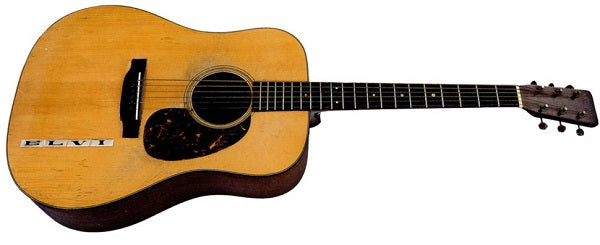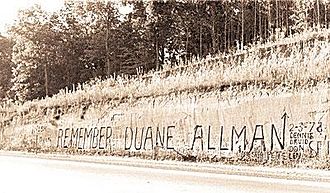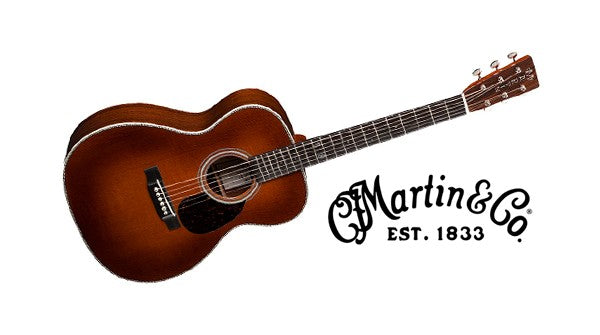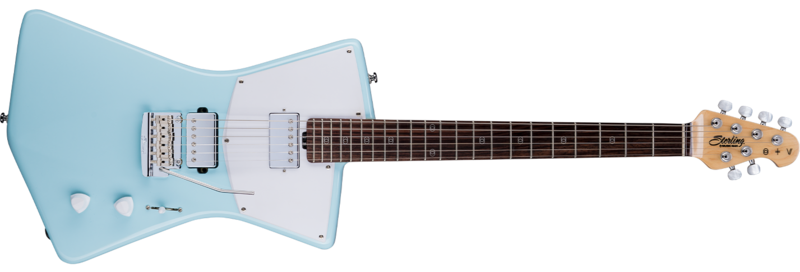Your Cart is Empty
The History and Importance of the Martin 18 Style
November 09, 2020 6 min read

Since the mid 1800‘s, when Style 18 appointments were first introduced, they have appeared on pretty much every Martin model at one time or another, including the 0-18, 00-18, 000-18, OM-18 and of course the legendary D-18. Style 18 instruments are not regarded as the fanciest of Martin’s instruments, but they do feature a set of appointments that are so sweet sounding and full of so much musical character that they are among Martin’s most sought-after styles.
Over the years, 18 Style appointments have maintained a consistent, legendary character, while also evolving with the times as new materials and building methods have become available. In this article we’ll be taking a brief look back at the history of Martin’s 18 style, and how Martin has continued to be an innovator over the nearly two centuries.
History of Martin 18 Style
The 18 Style is one of Martin’s oldest and most storied set of instrument appointments. The incredible sound of 18 Style instruments comes from the legendary tonewood combination of solid Spruce tops and Mahogany back and sides. However, when they were first introduced in 1857, the first 18‘s were a lot different than they are today.
The years 1850 to 1900 represent a time when CF Martin was implementing many of its greatest innovations in guitar making, increasing the sizes and style varieties they would later standardize. The body shapes, sizes and styles that we identify with Martin today did not exist as such at the time, but rather evolved over decades as the guitar as an instrument began to take its place in the music industry.
The earliest 18‘s, the Size 1-18 and size 2-18 models manufactured between 1857 and 1898 had Spruce tops with Rosewood back and sides, Ebony fingerboards without inlays and 12-fret necks. In 1898 Martin made 0-18 and 00-18 with the Spruce and Rosewood tonewood combination, an unbound ebony fingerboard and a rectangular bridge. The coming war years would be the years in which many of Martin’s greatest innovations would come, including the Dreadnought body shape, the 14-fret neck and the 18 Style appointments as we know them today.
1917 to 1930
The Martin 18 Style began to take its modern form in 1917 when Martin produced the first 18 Style instruments with Spruce tops and Mahogany back and sides. This was the 0-18 and 00-18‘s which appeared between 1917 and 1930 in several interesting and collectible variants including a gut-string version (00-18G) and a Koa version (00-18K). The Style 18's produced in the early 20's also featured a pyramid-shaped bridge which was discontinued in 1926 in favor of a rectangular bridge.
As the 18 Style came more into focus, more and more what we would consider modern appointments began to show up until the first ‘modern’ 18 Style models appeared in 1929 and 1930, the OM-18 and the 000-18. Martin introduced the OM-18, an 18 Style orchestra model with a 14-fret neck and the new 18 Style tonewood pairing of Spruce and Mahogany. Later in the same year, Martin introduced a 14-fret 000-18 model that would also feature the new rectangular bridge and the Spruce and Mahogany tonewood pairing, similar to the 000-18 that Thom Yorke plays with Radiohead (pictured below).
Thom Yorke playing Martin 000-18 
Depression Era and War Years: Rise of the D-18
The war years, and the Great Depression, saw significant changes in all of Martin's instruments, particularly Style 18 instruments. As the prospect of war loomed on the horizon in the United States, guitars were coming into their own as concert instruments, and Martin’s introduction of the Dreadnought size instruments -- named for the enormous 1906 Battleship the HMS Dreadnought -- made it possible for performers to deliver the volume and projection that they needed as they started playing in larger and larger venues.
Doc Watson Playing a Martin D-18
The introduction of the Dreadnought was one of the most important innovations in music history and would have an instant and lasting impact on Country, Bluegrass, Folk, Rockabilly and Rock all the way to the present era. Performers throughout music history including Elvis Presley, Doc Watson, Peter Rowan, Paul Simon, Jerry Garcia and Kurt Cobain were all known to favor the D-18, an 18 Style Dreadnought with the rich tone versatile enough to suit performers from any era.
Paul Simon With his Martin D-18

The D-18 dreadnought was manufactured with a Spruce top and Mahogany back and sides for the first time in 1931 and was an immediate sensation as it was the most affordable high quality dreadnought on the market. The D-18 and other 18 style Martins were not the fanciest models that Martin produced, but they were workhorses that sounded incredible. Martin‘s D-18 has a sweet sound described as both mellow and strong, balanced and never overbearing, mellow enough for fingerstyle while also being perfectly suited to vocal accompaniment and ensemble playing. The D-18 is considered by many experts to be Martin’s sweetest sounding guitar, making it the perfect accompaniment for songwriters looking for that deep, rich Martin sound but in a version that doesn’t overwhelm the vocal line, which is likely why may legendary songwriters like Paul Simon and Kurt Cobain were known to play them.
During the Depression and War years, certain building materials were often unavailable to American manufacturers, forcing them to substitute similar materials usually domestically sourced. For instance, during the depression, Martin used Adirondack Spruce sourced in upstate New York for their soundboards instead of Sitka Spruce which was most plentiful in and around Sitka, Alaska, which was not a US state until 1959. The ingenuity with which Martin was able to overcome Depression and Wartime shortages makes the War and Depression Era 18‘s particularly valuable and sought-after today by both players and collectors.
1945 to 2017
During the Great Depression, Martin went through numerous cost-cutting measures to make their guitars more affordable for the masses who were struggling financially. The D-18 was produced throughout the Depression and War years with non-scalloped bracing and Rosewood bridge and fingerboard to make it more financially feasible, making it the most accessible Dreadnought on the market, which really added to its popularity. Today, as part of Martin’s iconic Standard Series, the D-18 has all of its pre-war appointments.
Mark Lemaire playing 1949 D-18
While just about any era D-18, given the proper setup and adjustments, will surely sound great, in the years following WW2 the D-18 (alongside the D-28 which we’ll be writing about in more detail soon) came into its own as a guitar of choice for Bluegrass, Rockabilly and Rock N’ Roll artists, most notably Elvis Presley who loved his WW2 era D-18, the iconic ‘Sun Sessions’ D-18 thatrecently sold at auction for over $1 million.
Elvis’ Sun Sessions D-18
In the years following WW2, Martin refined its vision for the D-18 with several minor changes that defined its legendary voice even further, making it even more resonant. From late 1944 through most of 1947 the D-18 featured new tapered braces, tucked bridge plates and larger profile necks, giving them a more resonant sound, while retaining the D-18 characteristic sweetness and character.
Most recently, players like Thom Yorke of Radiohead and Kurt Cobain of Nirvana have favored 18 Style Martins, with Cobain’s D-18E played during Nirvana’s MTV Unplugged performance becoming arguably the most recognizable acoustic-electric of the MTV era, recentlyselling at auction for over $6 Million!
Kurt Cobain MTV Unplugged
2017: Reimagining the Standard Series
The D-18 and the rest of the Standard Series models with 18 Style appointments, including the 000-18, remained basically the same with very small variations from the Postwar years all the way into the new millennium untilMartin craftspeopledecided to update their most beloved line of instruments with ‘an even higher standard of tone, look, and playability.’
With the 2017 reimagining, Standard Series instruments were redesigned with the new low oval neck shape and the high performance neck taper. If there was any complaint about Prewar and Postwar vintage Martins, it would have been the girth of the neck. With the new low oval neck shape and high performance neck taper, all of the old 18‘s retain their classic tone, but with modern feel and playability.
Another feature of the reimagined Standard Series guitars is a new bracing pattern. The traditional X-bracing that Martins have sported for decades was refined in favor of a forward-shifted X-bracing pattern. With scalloped, forward-shifted X-bracing, the bracing is moved forward closer to the sound hole, leaving the top free to move and respond to your playing. This gives you a louder and more responsive instrument.
Today, with recent refinements, 18 Style instruments like the D-18 and the 000-18 retain their iconic sound with an array of modern enhancements that improve the feel and playability. From the mellow fingerstyle sounds of players like Mark Lemaire (featured above) and Paul Simon, to the dynamic, hard-strumming styles of Kurt Cobain and Thom Yorke, Martin 18‘s have the ability to deliver a range of tones that will suit almost any style of music, which is why they are among history’s most loved and sought after instruments.
Leave a comment
Comments will be approved before showing up.
Also in Adirondack Guitar News and Blog
Browse Our Store
Recent Articles
- Left Handed Guitarists Who Learned to Play Right Handed July 13, 2021
- The History and Importance of the Martin 28 Style July 13, 2021
- Adirondack Guitar Profiles: St. Vincent July 13, 2021
- Adirondack Guitar Profiles: John Petrucci May 05, 2021
- How to Turn Your Music Skills into a Career March 30, 2021



